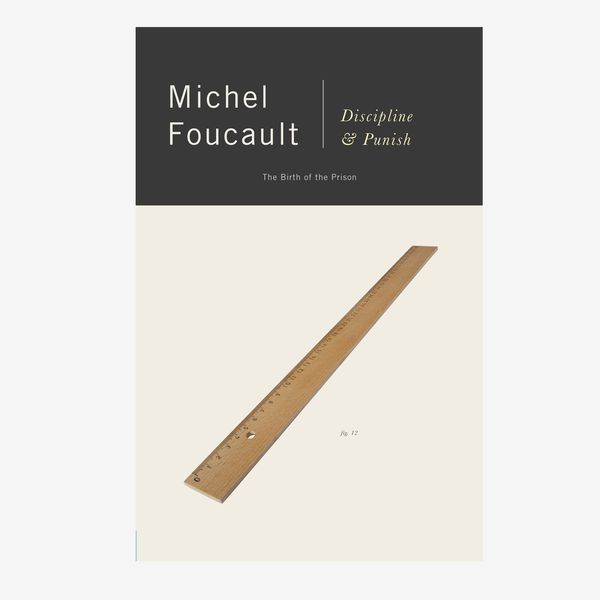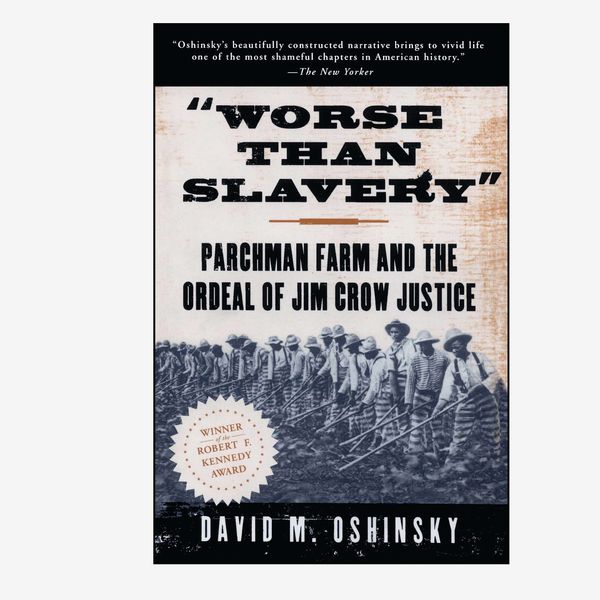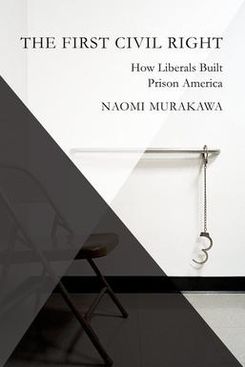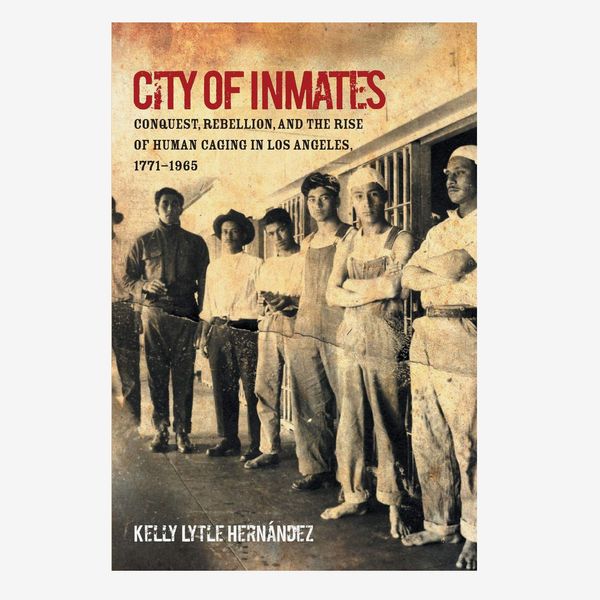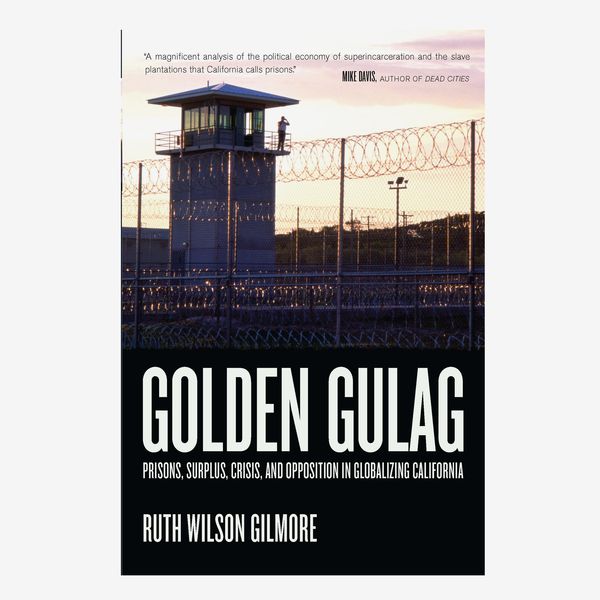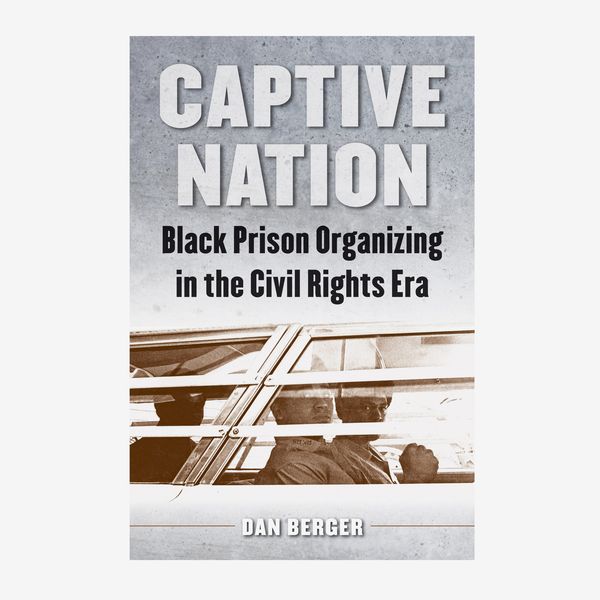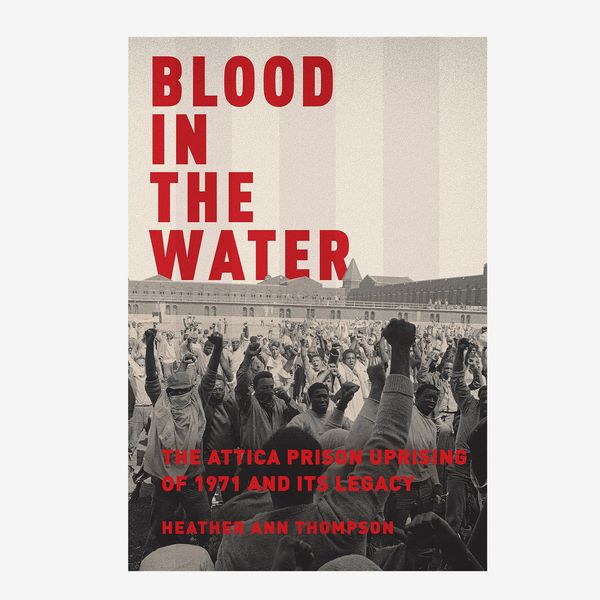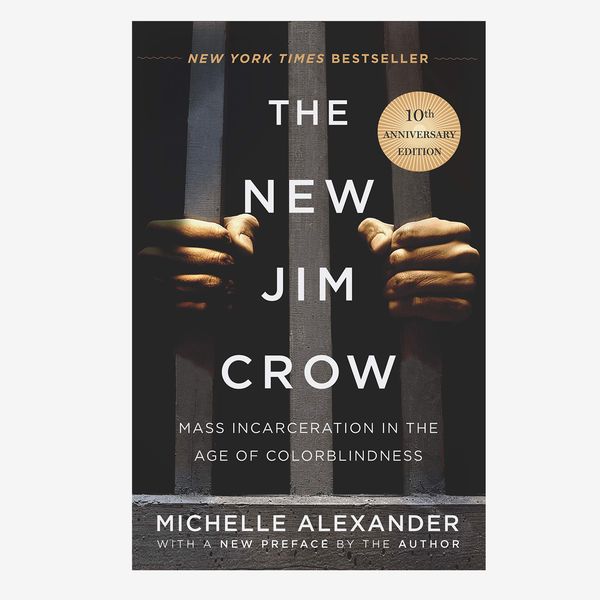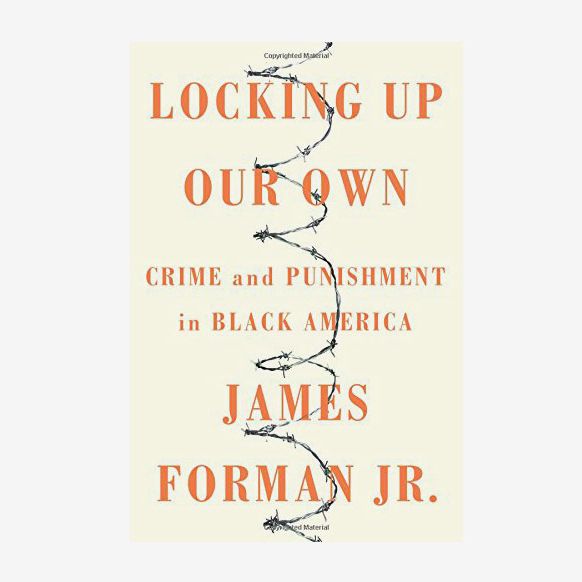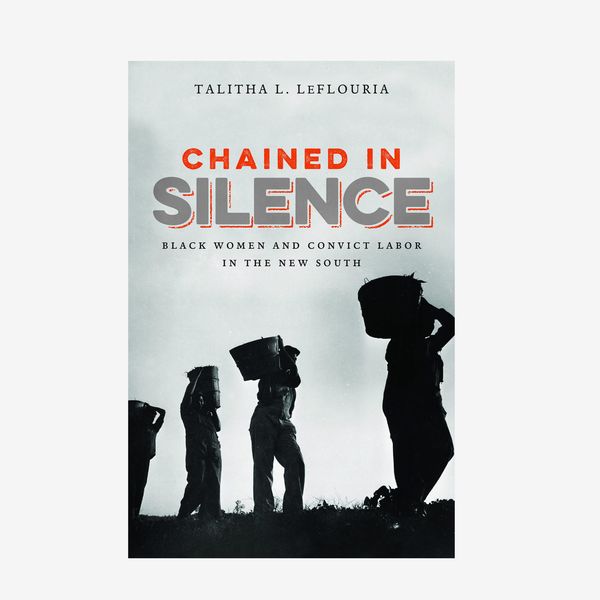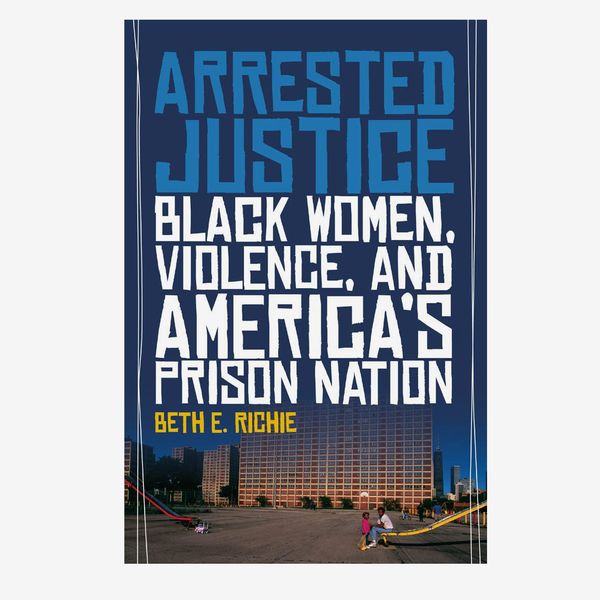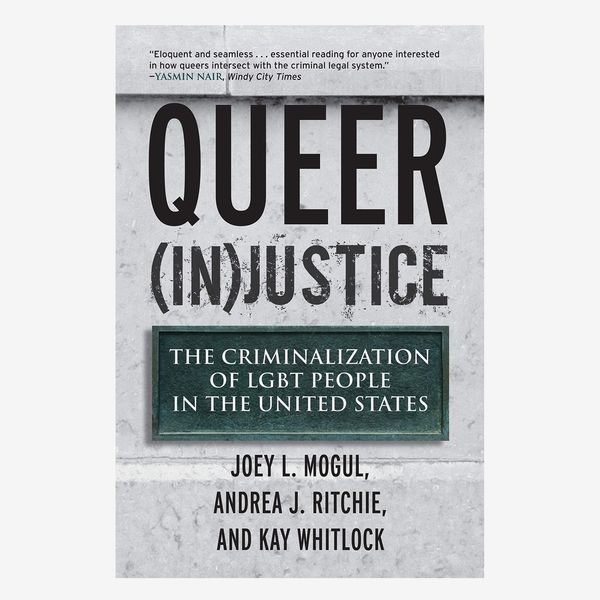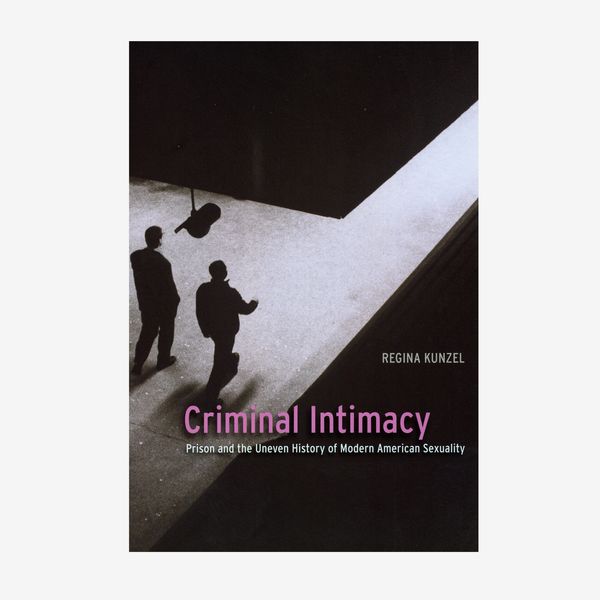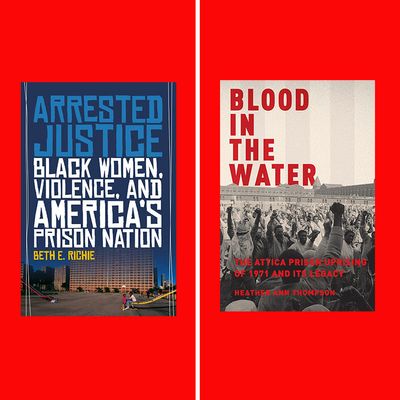
Along with calling for an end to police brutality, recent protests following the murder of George Floyd have brought attention to another national crisis that disproportionately affects people of color: mass incarceration. According to the Prison Policy Initiative, 2.3 million people (or 20 percent of the world’s prison population) are incarcerated in the United States, and while Black people make up only 13 percent of the U.S. population, 40 percent of prisoners are Black. Millions more are on probation or parole, facing restrictions on housing, employment, and, in many states, the right to vote.
Like police violence against people of color, this isn’t a new issue. Activists and scholars like Angela Davis and Ruth Wilson Gilmore have been arguing for the abolition of prisons for decades. But if you want to further educate yourself, we asked 11 scholars, lawyers, and activists what books they recommend for those seeking a deeper understanding.
Since mass incarceration is entangled with issues of race, gender, sexuality, and economics, we sought out experts with diverse perspectives on the topic who could recommend books addressing the prison system from all angles. Our panel includes Jeffrey Adler, professor and author of Murder in New Orleans: The Creation of Jim Crow Policing; Paul Butler, law professor and author of Chokehold: Policing Black Men; Robert Chase, professor and author of We Are Not Slaves: State Violence, Coerced Labor, and Prisoners’ Rights in Postwar America; David C. Fathi, director of the ACLU National Prison Project; author and professor Shaun L. Gabbidon, Kali Nicole Gross, professor and co-author of A Black Women’s History of the United States; Sarah Haley, professor and author of No Mercy Here: Gender, Punishment, and the Making of Jim Crow Modernity; Elizabeth Hinton, professor and author of From the War on Poverty to the War on Crime: The Making of Mass Incarceration in America; Jen Manion, professor and author of Liberty’s Prisoners: Carceral Culture in Early America; law professor Jocelyn Simonson; and Caleb Smith, professor and author of The Oracle and the Curse: A Poetics of Justice from the Revolution to the Civil War.
As in all our reading lists, the 14 books below come recommended by at least two of our experts. These titles cover the origins of our prison system, those who have been affected by incarceration, and the growing resistance movement. While we’ve separated the books into categories, it’s important to keep in mind that there are intersections and overlaps between topics. For example, a book about the history of prison in America is inevitably a book about race, while a book about race and prison will include discussions of resistance movements.
Books on the origins and history of prison
For an understanding of the philosophy behind modern-day prisons, four of our experts recommend Discipline and Punish, an analysis of the historical shift from corporal punishment and torture to today’s supposedly more “enlightened” incarceration system that, as Chase explains, “requires a disciplining of the mind.” Foucault critiques the idea that modern prisons are humane by suggesting that so-called reformers have instead created a “carceral network” that extends into all aspects of society (including schools, businesses, and the military) and disempowers individuals while enforcing social norms. Hinton calls Discipline and Punish, “the starting point for anyone interested in how the modern system of punishment took hold and its insidious effects on society.” The most theoretical book on this list, Butler admits that it’s “dense, difficult reading, but worth the investment.”
Tracing the history of Mississippi’s Parchman Farm prison from the Reconstruction era through the civil rights movement of the 1960s, Oshinsky reveals how convict-leasing practices and brutal conditions for disproportionately Black prisoners created a system of racial subjugation and forced labor that wasn’t all that different from slavery. Adler tells us that this “phenomenal book” is always a favorite among his students, partly because Oshinsky draws on blues songs and other non-traditional historical sources like folklore and oral history to tell the story of this gruesome chapter of American history, and Manion says it’s a “classic in showing the brutality of Parchman Farm and how punishment after slavery was a lot like slavery.”
According to Simonson The First Civil Right, which Adler also recommends, “puts to rest the myth that only law-and-order Republicanism is to blame for mass incarceration in the United States.” Murakawa reveals how Democratic administrations (from Lyndon B. Johnson to Bill Clinton) enacted policies that were meant to protect people of color from violence and police brutality but ultimately contributed to the racial disparity in America’s prisons. Simonson says it’s an important read for progressives, because it shows “that we need to move beyond traditional liberal values if we’re going to break out of our current status quo.”
Gross calls this examination of incarceration in Los Angeles “an incredible undertaking” and “a deep, generative dive into the history of Los Angeles’s sprawling prison system through the forces that created it but also, and more importantly, through the voices of those that opposed it such as prisoners, journalists, musicians, mothers, and migrants.” As Adler describes, Lytle Hernández traces the origins of the city’s incarceration policies “all the way to the colonial era, and argues that what we have now is a vestige of this Anglo-invasion of the far west and this kind of settler domination.” Chase says City of Inmates is essential in understanding how “jails serve as a way to erase people out of urban landscapes,” as it delves into how the system was used to suppress different groups over time: Native Americans upon the arrival of white settlers, and later on Mexican immigrants and Black people.
Ruth Wilson Gilmore’s Golden Gulag also focuses on California’s dominant role in the explosion of incarceration in America, covering the period from 1980 to the present, with an eye to how capitalism fuels the system. “I would say this is the most important single book on the modern carceral state,” Haley says. Simonson adds that the book includes “gripping stories of prison towns and communities in which prisons become a commodity, prison jobs the only means of labor, and incarceration cements itself as a seeming political economic necessity.” Hinton and Chase recommend the book, as well, along with Smith, who says “Gilmore’s definition of racism has become ever more relevant for those of us who want to understand the connections between the racial inequities that connect the COVID-19 pandemic to the prison crisis: ‘Racism, specifically, is the state-sanctioned or extralegal production and exploitation of group-differentiated vulnerability to premature death.’” Still, as an advocate for prison abolition, Gilmore remains hopeful that, as Simonson says, “this is not inevitable, that in collective struggle this can change.” Butler agrees, telling us, “when prison abolition happens, and it will, Golden Gulag will be one of the reasons why.”
Books on prison resistance and abolition movements
In one of the most recommended books on our list, scholar and activist Angela Davis “makes a powerful case for [prison] abolition,” according to Hinton. Simonson says it’s “one of the central texts of the prison abolition movement,” and Smith calls it the movement’s “manifesto.” For Gross, Davis’s book is extraordinary in the way it “encourages readers to imagine alternatives to imprisonment, especially by addressing the broader structural issues propelling mass incarceration.” Similarly, Gabbidon says “Professor Davis argues that this movement, like others abolition movements in America, seem radical at first but after some struggle have the potential to transform society.” And Chase adds that “the only way to advance social progress and forge racial equality is to imagine a world that doesn’t exist, because the world we live in is a world structured by systematic racism.”
In Captive Nation — which Hinton calls “the definitive study of prisoners’ rights activism,” Dan Berger situates the mass incarceration of Black people at the center of the civil-rights movement. As Manion says, the book “shows how Black Panthers and civil-rights activists were targeted by the state and punished — and also how prisons became an important site of civil-rights organizing.” By studying prison resistance movements in the 1950s–1980s, Haley says that Berger “convincingly argues that we must understand the civil rights movement as a movement against the carceral state, and a far more expansive critique of America as a prison.” Chase agrees that Berger’s book is essential for understanding how resistance to the prison system goes hand-in-hand with the struggle for Black liberation.
For a detailed look at one of the most significant prison rebellions in our country’s history — which Fathi says “launched the modern prisoner rights movement” — nearly all of our experts recommended Heather Ann Thompson’s meticulously researched account of the Attica Prison uprising. In 1971, prisoners, demanding negotiations for more humane conditions, took control of the upstate New York prison before Governor Nelson Rockefeller ordered the retaking of the prison by violent force. “Blood in the Water allows readers to really live within that moment, to experience it thoroughly,” according to Chase. “In a narrative style that’s almost written more like a novel than a traditional historical account, it really places the reader within the tension of both the hostage crisis over four days, and then the state’s retaking.” Like many others, Adler notes Thompson’s use of primary sources to recreate the uprising and, perhaps more importantly, the government’s attempt to cover it up and change the narrative, shifting blame from racist officers onto prisoners. Simonson calls the book “a story of collective struggle from inside, and also of the lengths that the state will go to to hide the racialized violence of prison and preserve the system of mass incarceration it has erected.” The book was awarded in a Pulitzer Prize in 2017 and was also a National Book Award finalist.
Books on race and prison
“If there’s a single book that has really dominated the field, this would be it,” says Adler of Michelle Alexander’s award-winning book, which he credits for making scholarship about racial discrimination and incarceration accessible to a wide audience. Linking Jim Crow–era laws with today’s criminal justice policies, Gabbidon says the book “puts it all together to show how criminal-justice policy has had a detrimental impact on the lives of Black people — pointing to the collateral consequences of this new system that criminalizes large numbers of Black and Brown people: employment difficulties for ex-offenders, denial of public housing benefits, the overall stigma of having a criminal record, and the inability to reintegrate back into society.” Butler says it’s “the little book that started a revolution.”
In Locking Up Our Own, James Forman Jr., a former public defender, “does some hard truth-telling about how Blacks have also played a role in promoting punitive policies that have contributed to their mass incarceration,” according to Gabbidon. Simonson explains that this was often due to “the failure of the political system to offer alternatives [to criminal law],” as Black leaders sought ways to reduce violence and harm through other types of policies, but faced limited options. Adler says the book is important for “looking at the structural inequities in the modern criminal justice system and the way that it essentially funnels poor people, especially poor people of color, into penitentiaries, fueling the mass incarceration movement.” It won a Pulitzer Prize in 2018.
Books on gender, sexuality, and prison
According to Gross, historian Talitha L. LeFlouria’s book “won a treasure chest of awards and for good reason: it made a massive contribution to the field and it centered Black women’s carceral experiences.” Enlisted as convict laborers, Black women prisoners were essential in rebuilding the South after the Civil War, and in the process were subjected to sexual violence as well as a kind of “social rape,” which Chase describes as the erasure of their identity as women in the eyes of society. “Despite incarceration’s attempt to dehumanize prisoners, Chained in Silence is one of the few books on prison that humanizes the experience of women prisoners to show how Black women struggled against and survived the dehumanization of incarceration,” says Chase.
Both Gross and Haley recommend Arrested Justice, an exploration of how, as Gross puts it, “bad policies and a racist justice system together with issues such as intimate partner violence, sexual molestation, and poverty collide to land Black women in prison at an alarmingly disproportionate rate.” In the book, Richie details the deeply entrenched racist and misogynist systems that punish Black women both in and outside of prison walls. “It is necessary reading for anyone who wants to understand how reform can entrench violence, for those seeking greater understanding of the relationship between gender and racial oppression in carceral expansion, who want insight into intersectional modes of marginalization, and who value the care that writers such as Richie take with the stories of marginalized people,” says Haley.
Along with Black women, members of the LGBTQ community have also suffered disproportionately at the hands of the criminal justice system, as detailed in Queer (In)Justice. Gross says the book “exposes how narrow notions of gender and sexuality leads to both hyper-policing of queer communities and profound carceral violence against them through a host of nefarious dehumanizing practices inside,” and Manion recommends it as an “overview of the experiences of LGBTQ people as targets of harassment, stigma, and punishment.”
Chase describes Criminal Intimacy as “an intellectual history of how the language and ideas of prison sexuality changed over the course of the 20th century,” from a discussion of how homosexuality was considered a “contagion” in prisons in the 1940s and 1950s, to decades later when prisons became, he says, “a perfected space of ‘containment’ to keep fears over’ ‘perversion’ (homosexuality) in-check.” Manion also thinks the book is essential reading for understanding the intersection of incarceration and sexuality, explaining that “prisons were always sites of same-sex sex and desire and doctors studied prisons to develop theories of sexual ‘deviance’ and ‘situational’ homosexuality with lasting implications for modern concepts of sexuality.”
The Strategist is designed to surface the most useful, expert recommendations for things to buy across the vast e-commerce landscape. Some of our latest conquests include the best acne treatments, rolling luggage, pillows for side sleepers, natural anxiety remedies, and bath towels. We update links when possible, but note that deals can expire and all prices are subject to change.
